Paris, a city that’s a world unto itself, is a mosaic of cultural, historical, and architectural marvels. Yet, the allure of France does not end within its grand boulevards and narrow alleyways. But to limit one’s exploration to the city’s confines is to miss out on the rich tapestry of culture, history, and natural beauty that surrounds it. The French rail system, with its efficiency and extensive network, offers a golden ticket to discovering the wonders that lie just a day’s journey from Paris. Embarking on the best day trips from Paris by train not only unveils the diverse landscapes of France but also its neighboring countries.
From the regal splendor of Versailles, where the history of France’s royalty is etched in its opulent halls and vast gardens, to the tranquil beauty of Giverny, where Monet’s masterpieces came to life amidst blooming gardens and reflective ponds, the journey beyond Paris is a testament to the richness of European culture and heritage.
The charm of these excursions lies not just in the destinations themselves but in the journey. The French countryside, seen from the comfort of a train carriage, unfolds in a picturesque panorama of vineyards, medieval towns, and rolling hills. Each stop on this journey offers a unique glimpse into the past and present of France and beyond, be it through the Gothic cathedrals of Chartres, the Renaissance splendors of Blois, or the innovative spirit of Nantes with its whimsical Machines of the Isle.
The practicality of these day trips adds to their appeal. With Paris as a base, travelers can venture out each morning to a new destination, returning by nightfall with memories of adventures in places where history is alive in the streets, art is a way of life, and the landscape tells stories of centuries past.
In sum, the best day trips from Paris by train are a celebration of discovery and exploration. They invite travelers to step beyond the familiar and immerse themselves in the beauty, history, and diversity that lies just a short train ride away.
Exploring Brussels: Belgium’s Heartbeat
Brussels, the de facto capital of the European Union, is a city that blends its historical richness with modern dynamism in a compact, accessible space. This guide aims to take you on a journey through Brussels, showcasing why it’s an unmissable day trip from Paris by train, offering insights into its iconic landmarks, culinary delights, and unique cultural offerings.
Grote Markt (Grand Place): The Heart of Brussels
At the heart of Brussels lies the Grote Markt, or Grand Place, a UNESCO World Heritage site that is often hailed as one of the most beautiful town squares in Europe. Surrounded by opulent guild halls, the striking Town Hall, and the King’s House (Maison du Roi), which now serves as the Brussels City Museum, the Grand Place is a testament to Brussels’ architectural and artistic heritage. The square is not just a feast for the eyes; it’s also the pulsating heart of the city’s social life, hosting events, markets, and a famous flower carpet display every two years.
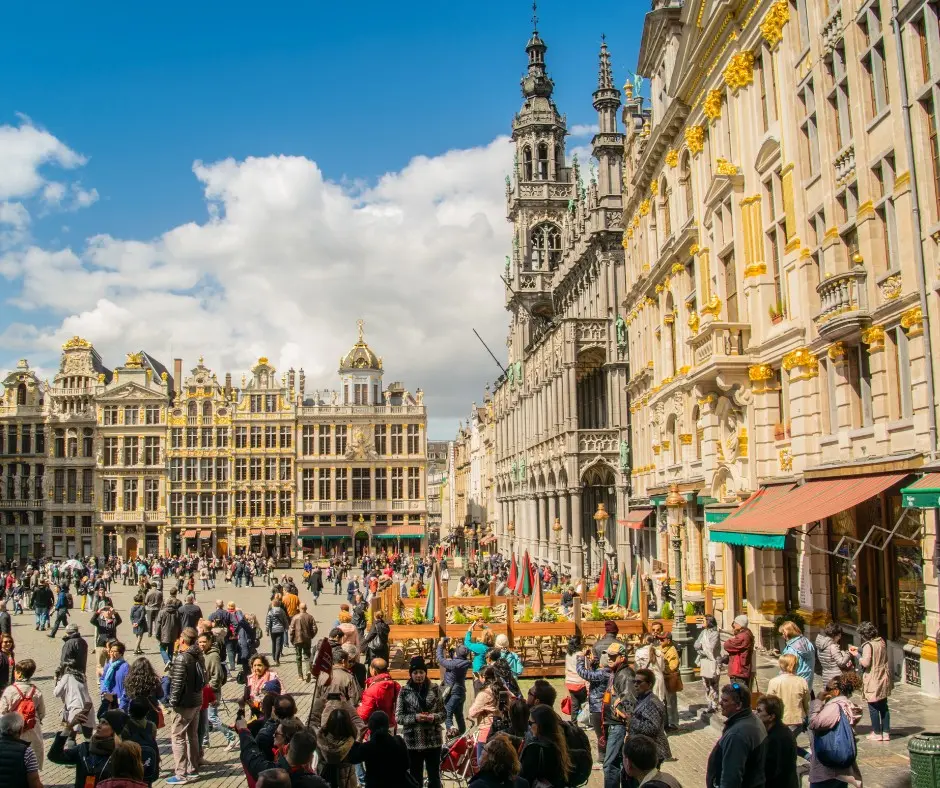
Architectural Marvels: Cathedrals of St. Michael and St. Gudula
A short walk from the Grote Markt, the Cathedrals of St. Michael and St. Gudula stand as remarkable examples of Gothic architecture. These twin towers dominate the city’s skyline and invite visitors to explore their richly decorated interiors. The cathedrals are not only places of worship but also hold significant historical importance, having witnessed numerous royal weddings and state funerals.
Culinary Delights: Waffles and Chocolates
Belgian cuisine is a highlight of any visit to Brussels, with Belgian waffles and chocolates topping the must-try list. Waffles, served hot from street vendors, come in two varieties: the Brussels waffle, light and crispy, and the Liège waffle, richer and denser. As for chocolates, Brussels is home to some of the world’s finest chocolatiers, offering a myriad of choices from pralines to truffles, each more tempting than the last.
Cultural Immersion: Museums and Art Galleries
Brussels boasts a vibrant cultural scene, with numerous museums and art galleries catering to diverse interests. The Magritte Museum, dedicated to the renowned surrealist artist René Magritte, and the Comic Strip Museum, celebrating Belgium’s rich comic book history, are just a couple of examples. These cultural institutions not only provide insight into Belgium’s artistic contributions but also offer a deeper understanding of its history and societal changes.
Navigating Brussels
Accessibility is one of Brussels’ strengths, with most major sites within walking distance from the central train station. For destinations further afield, the city’s comprehensive public transportation network, including trams, buses, and a metro system, makes getting around both easy and efficient.
The Medieval Charm of Chartres
Located in the heart of France, a mere train ride from the bustling streets of Paris, lies the medieval city of Chartres. Renowned for its architectural beauty and historical significance, Chartres offers a serene escape into the past, with the Cathedral of Notre-Dame at its heart. This piece delves into the allure of Chartres, exploring the cathedral’s UNESCO status, its architectural marvels, and the enchanting lighting displays that transform the city center into a visual spectacle.
Notre-Dame Cathedral: A UNESCO Masterpiece
At the center of Chartres’ medieval charm stands the Cathedral of Notre-Dame, a masterpiece of French Gothic architecture. Built in the 12th century, the cathedral is celebrated for its remarkable state of preservation, offering a window into the architectural and spiritual life of medieval Europe. Its designation as a UNESCO World Heritage site underscores its global significance, preserving a legacy of religious, historical, and architectural importance for future generations.
The cathedral’s most distinguishing features include its towering spires, which reach towards the heavens, and its three magnificent facades, each adorned with intricately carved sculptures that depict scenes from the Bible and the lives of saints. The cathedral’s harmonious design and proportions exemplify the Gothic architectural style’s evolution, influencing the development of cathedral architecture across Europe.
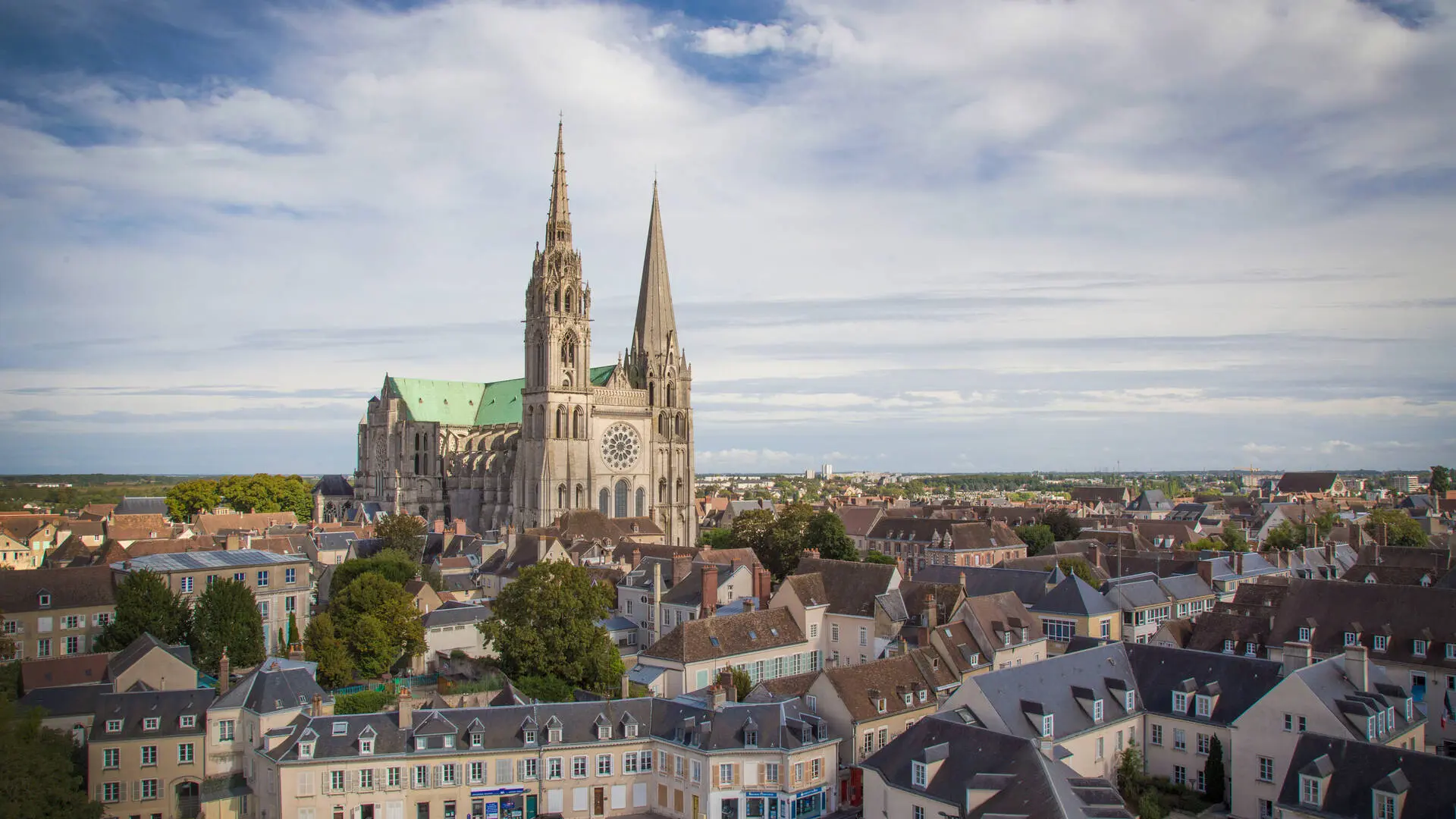
Source: Chartres Tourism
Stained Glass Windows: A Symphony of Light and Color
The Cathedral of Notre-Dame in Chartres houses one of the world’s most extensive and well-preserved collections of medieval stained glass windows. These windows, many of which are original to the cathedral’s construction, cast a kaleidoscope of color throughout the interior, creating a mesmerizing atmosphere of light and spirituality. The windows not only serve as biblical teaching tools but also as works of art, illustrating the craftsmanship and artistic vision of the medieval period.
The Regal Splendors of Versailles
Embarking on a journey to the Palace of Versailles from Paris by train ushers you into a realm where the grandeur of French monarchy unfolds amidst opulent halls, sprawling gardens, and enchanting estates. This guide offers an immersive exploration into the regal splendors of Versailles, covering not just the palace itself but also the expansive gardens, the Grand Trianon, and the quaint Queen’s Hamlet, complemented by practical tips to enhance your visit.
The Palace of Versailles: A Monument to Royal Grandeur
The Palace of Versailles, once the epicenter of French political power, is a testament to the lavishness of the French monarchy. The palace’s architecture and interior design reflect the absolute power of Louis XIV, known as the Sun King. Visitors are treated to a parade of opulence through the State Apartments, the Hall of Mirrors, and the King’s and Queen’s chambers, each room telling a story of political intrigue, artistic endeavor, and cultural dominance.
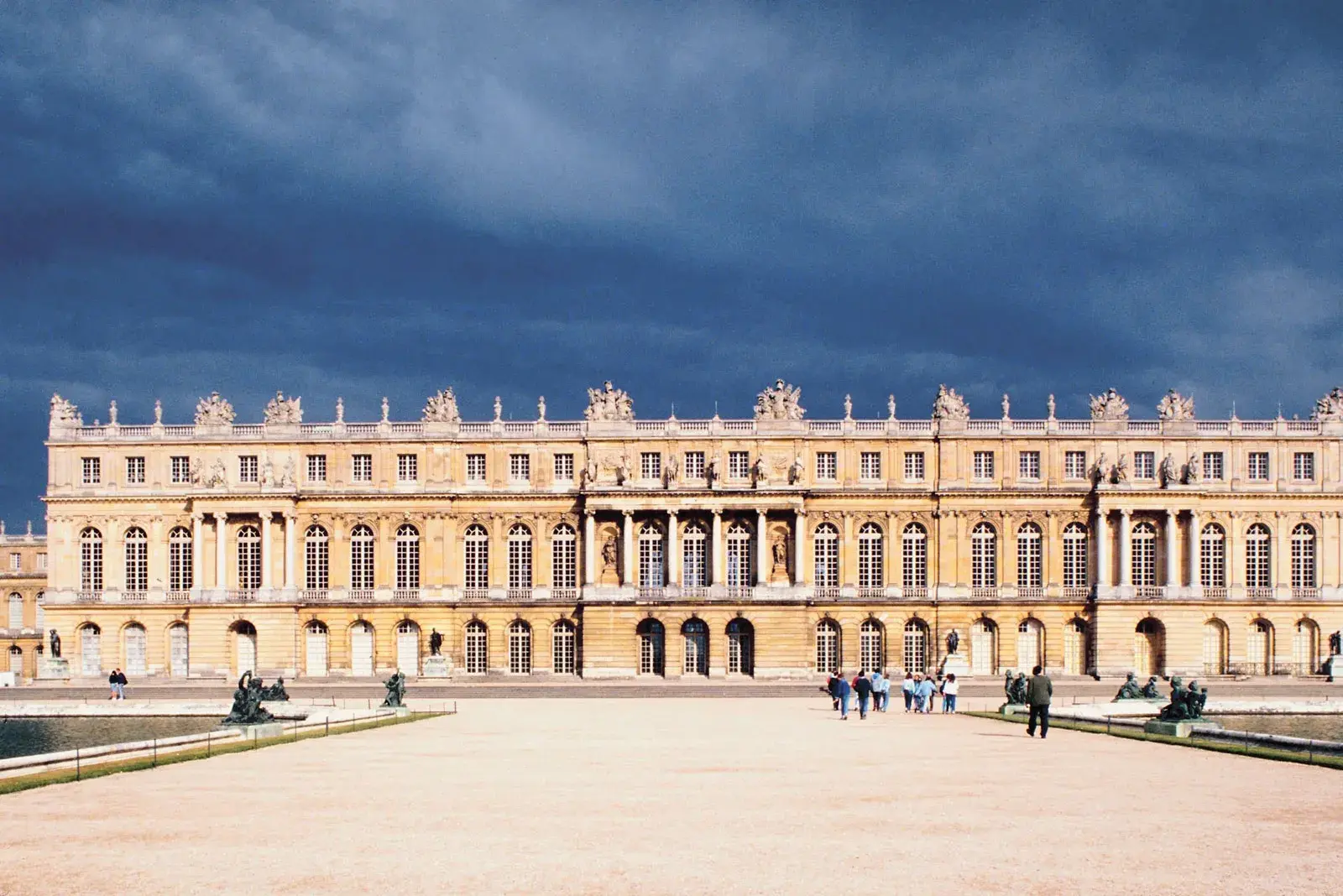
Source: Britannica
The Versailles Gardens: A Masterpiece of Landscape Design
Beyond the palace walls lie the Gardens of Versailles, a sprawling expanse of landscaped beauty that extends over 800 hectares. Designed by André Le Nôtre, the gardens are a testament to symmetry, precision, and grandeur, featuring meticulously manicured lawns, ornate fountains, and statuesque groves. The gardens are not just a feast for the eyes but also a showcase of engineering marvels, with fountains that dance to the rhythms of classical music during the musical fountain shows.
The Grand Trianon and Marie-Antoinette’s Estate
A short stroll from the main palace is the Grand Trianon, a marble palace surrounded by fragrant gardens, built as a retreat from the rigors of court life. Nearby, the Petit Trianon and the Queen’s Hamlet offer a glimpse into the private life of Marie-Antoinette. The Queen’s Hamlet, a rustic retreat featuring a working farm, cottages, and a picturesque lake, reflects Marie-Antoinette’s idealized vision of rural life, contrasting sharply with the formal grandeur of the main palace.
Nantes: A Gateway to Innovation and History
Embarking on a day trip from Paris to Nantes offers a dive into a city where history and innovation converge, creating a vibrant urban tapestry that’s both fascinating and forward-thinking. Nantes, a city on the Loire River in the Upper Brittany region of western France, has undergone a transformation from a historic port and industrial center to a hub of cultural and technological innovation. The city’s architectural wonders and the unique Machines of the Isle of Nantes are just the beginning of what you can explore.
The Machines of the Isle of Nantes: A Testament to Creativity
The Machines of the Isle of Nantes (Les Machines de l’île) is an artistic, touristic, and cultural project based in the old shipyards of Nantes. It’s most famous for the Great Elephant, a mechanical marvel that takes visitors on a unique journey around the Isle. The project also includes the Marine Worlds Carousel, a three-tier carousel that plunges visitors into an imaginative sea world, and the Heron Tree, a monumental steel structure planned to house flying herons. These creations blend the inventive worlds of Jules Verne and the mechanical universe of Leonardo Da Vinci, offering a unique experience that captivates both children and adults.
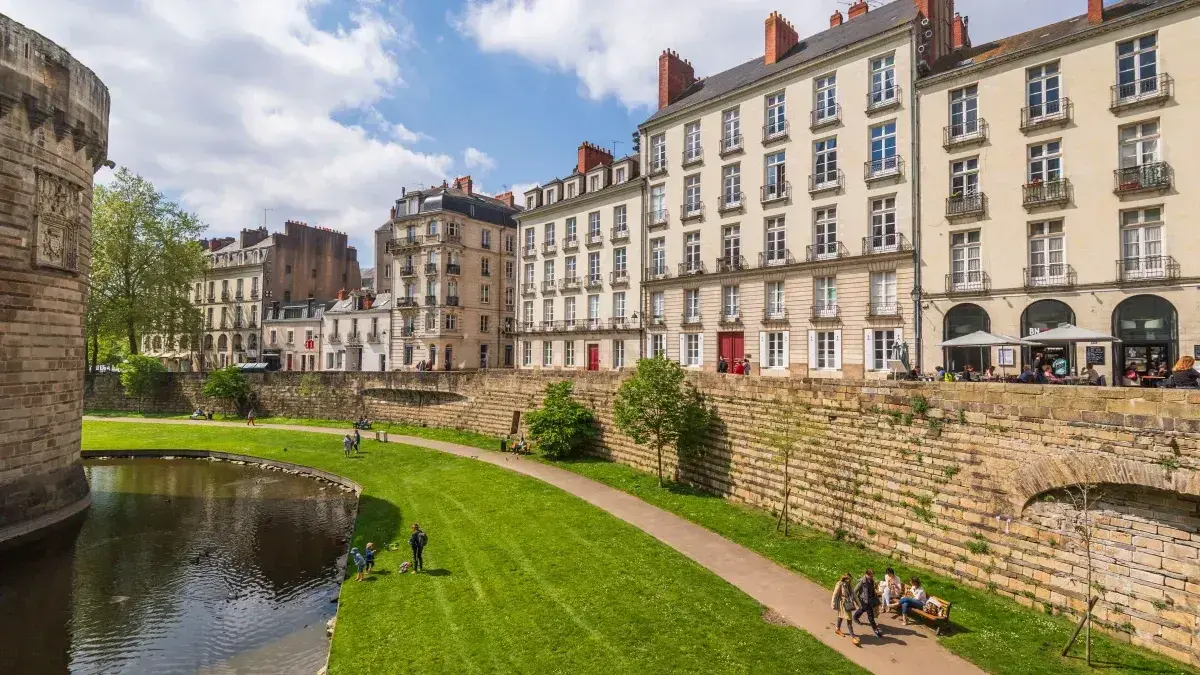
Source: Culture trip
Utilizing the Nantes City Pass for an Enhanced Experience
For visitors looking to explore Nantes comprehensively, the Nantes City Pass is an invaluable resource. Offering free access to major museums and attractions, including the Castle of the Dukes of Brittany, the Nantes Museum of Arts, and, of course, the Machines of the Isle, the pass also includes unlimited use of public transport. With options for 24, 48, or 72 hours, the pass allows visitors to tailor their exploration of Nantes according to their schedule and interests.
The Renaissance Aura of Blois
Blois, located in the heart of the Loire Valley, is a city that exemplifies the Renaissance aura, drawing visitors into a world where architectural grandeur meets historical intrigue. The Château de Blois, with its blend of architectural styles, stands as a testament to the city’s rich past and its role in the unfolding tapestry of French history.
The Architectural Majesty of Château de Blois
The Château de Blois is not just a castle; it’s a chronicle of French architecture, embodying styles from the Gothic to the Renaissance and the Classical. This architectural diversity presents a visual history of France’s evolution, with each wing of the château representing a different era and ruler’s influence. The Gothic Louis XII wing, with its flamboyant façade, welcomes visitors into the castle’s storied past. The François I wing, a masterpiece of French Renaissance architecture, dazzles with its ornate staircases and sculptural details. The Classical Gaston d’Orléans wing, although never completed, adds another layer to the château’s architectural narrative, showcasing the shifting tastes and political ambitions of its inhabitants.
Historical Significance Within the Loire Valley
The Château de Blois is more than an architectural marvel; it’s a key player in the history of the Loire Valley and France at large. It served as the residence of several French kings and queens, a backdrop to pivotal events such as the assassination of the Duke of Guise, which marked a turning point in the French Wars of Religion. The castle’s halls and chambers have witnessed conspiracies, celebrations, and the everyday lives of French royalty, offering a window into the cultural and political life of Renaissance France.
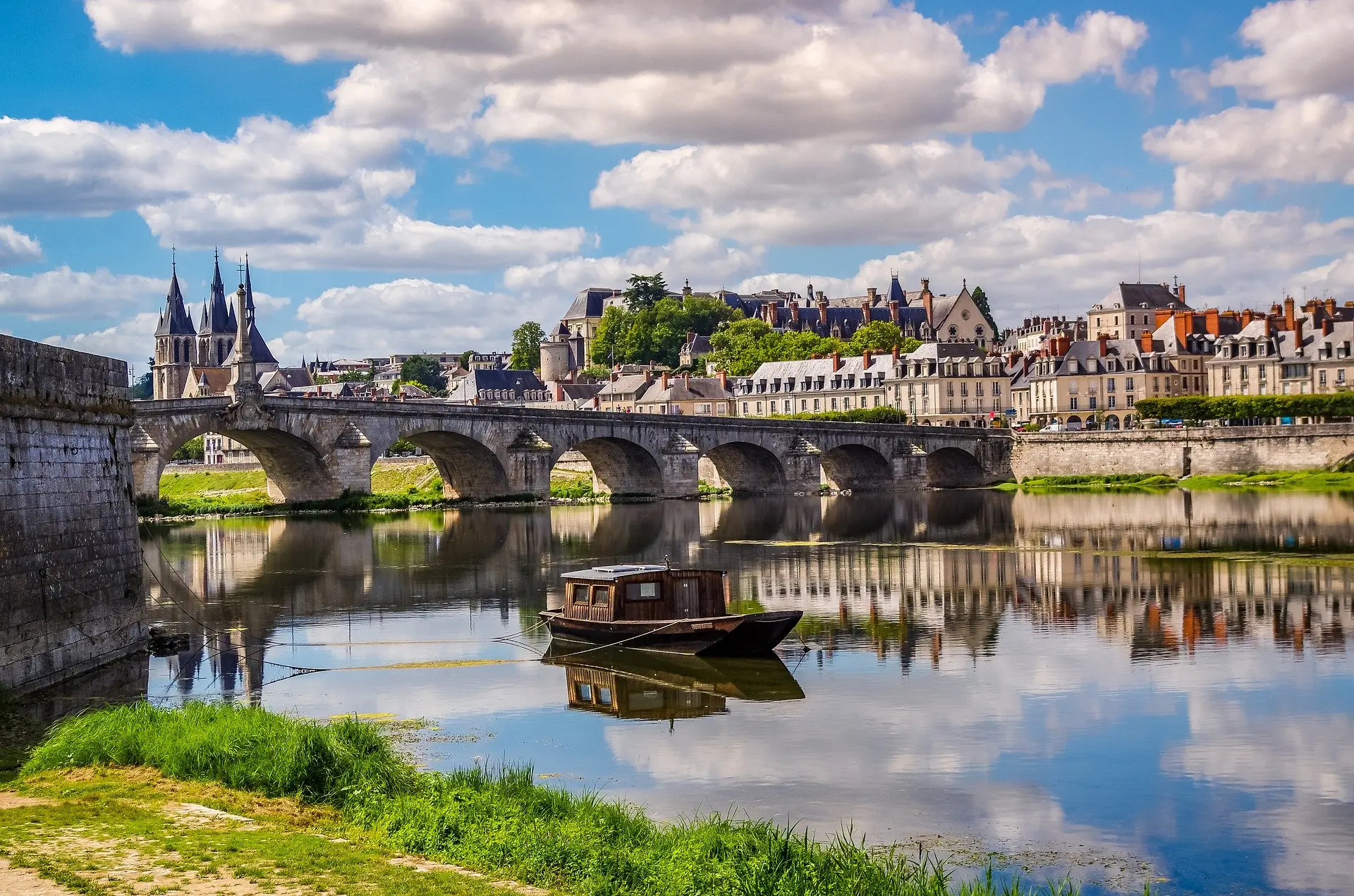
Source: France Daytrip
Visiting Château de Blois
A visit to the Château de Blois is a journey through time, offering insights into the lives of those who walked its halls and shaped its destiny. The castle’s interior, meticulously restored, features royal apartments adorned with period furniture, tapestries, and artworks, inviting visitors to imagine the splendor and intrigue of court life. The Sound and Light show, held in the castle’s courtyard, brings its history to vivid life, combining storytelling with cutting-edge technology to illuminate the château’s past.
Lyon: A Cultural and Gastronomical Journey
Lyon, situated at the confluence of the Rhône and Saône rivers, is a city where culture and gastronomy are not just parts of life; they are life itself. Renowned as France’s gastronomy capital, Lyon offers a journey through culinary excellence, while its vibrant city life and historical landmarks beckon travelers to delve deeper into its rich tapestry.
Gastronomy: The Heartbeat of Lyon
Lyon’s reputation as the gastronomy capital of France is well-earned, with the city offering an array of dining experiences that are a testament to its rich culinary traditions. The bouchons, traditional Lyonnaise restaurants, serve up local specialties such as quenelles, Lyonnaise salads, and coq au vin, providing a taste of the region’s culinary heritage in a warm, convivial atmosphere. The presence of several Michelin-starred restaurants further underscores Lyon’s status as a culinary mecca, where innovation meets tradition on the plate. This city, where Paul Bocuse, the Pope of French cuisine, hailed from, continues to be a pilgrimage site for food enthusiasts worldwide.

Source: KAYAK
Cultural Vibrancy: A City Alive with Creativity
Lyon’s cultural vibrancy is palpable in its numerous museums, theaters, and festivals. The Museum of Fine Arts, housed in a stunning 17th-century former abbey, boasts one of Europe’s largest art collections, spanning ancient Egypt to modern art. The Confluence Museum, with its futuristic architecture, explores the intersections of science and humanity. Lyon’s cultural calendar is highlighted by the Festival of Lights (Fête des Lumières), an annual event that transforms the city into a canvas of light installations, attracting visitors from around the globe.
Orleans: Following the Footsteps of Joan of Arc
Orléans, a city steeped in French history and medieval charm, is inextricably linked to the heroic figure of Joan of Arc, who played a pivotal role in lifting the siege of Orléans in 1429 during the Hundred Years’ War. This event marked a turning point in the war and cemented Joan of Arc’s status as a national heroine and saint. Today, Orléans pays homage to her legacy through its medieval architecture, dedicated museums, and annual festivals that celebrate her life and achievements.
Medieval Architecture and Historical Sites
Orléans’ rich history is visible in its well-preserved medieval architecture. The city’s layout, with its narrow streets and historic buildings, offers a glimpse into the past, particularly in the Old Town area. Central to Orléans’ historical narrative is the Orléans Cathedral (Cathédrale Sainte-Croix), a magnificent Gothic structure that stands as a testament to the city’s resilience and architectural ingenuity. The cathedral has undergone several reconstructions, the latest in the 19th century, and features stained glass windows depicting the life of Joan of Arc, adding a layer of historical significance to its religious purpose.
The Home of Joan of Arc
One of the focal points for visitors interested in the saga of Joan of Arc is the Maison de Jeanne d’Arc. This museum, situated in a house thought to be where Joan of Arc stayed during the siege, offers insights into her life, the strategies employed during the battle to liberate Orléans, and her subsequent capture and martyrdom. Though the original house was destroyed, the reconstructed building serves as a poignant reminder of her impact on the city and French history.
Celebrating Joan of Arc’s Legacy
Orléans commemorates Joan of Arc’s heroism through various events and festivals, the most notable being the Fêtes de Jeanne d’Arc. Held annually in early May, this festival features a range of activities including historical reenactments, parades, and a medieval market. It culminates in a ceremony where a local girl, chosen to represent Joan of Arc, leads a procession through the city, symbolizing the liberation of Orléans. This event not only honors her memory but also serves as a vibrant celebration of the city’s rich cultural heritage.
Strasbourg: A Blend of Cultures and Traditions
Strasbourg, the capital city of the Alsace region in eastern France, stands as a testament to the harmonious blend of French and German cultures, thanks to its strategic location on the banks of the Rhine River. This unique fusion has given Strasbourg a rich cultural tapestry that is evident in its architecture, cuisine, and traditions, making it an intriguing destination for visitors.
French and German Influences
Strasbourg’s architecture vividly reflects its Franco-German heritage, most notably in the “Petite France” district, known for its cobblestone streets, half-timbered houses, and picturesque canals reminiscent of a scene from a fairy tale. The Gothic Cathédrale Notre-Dame, with its intricate façade and towering spire, dominates the city’s skyline and serves as a symbol of Strasbourg’s resilience and architectural splendor over the centuries.
Picturesque Scenery and Vibrant Cultural Scene
Strasbourg’s scenic beauty extends beyond its architecture into the natural realms, with the Ill River encircling the historic city center, creating an island known as the “Grande Île.” This area, designated a UNESCO World Heritage site, offers stunning views and tranquil spaces within the bustling city. Strasbourg’s commitment to cultural diversity and celebration is evident in its numerous festivals, museums, and art galleries. The city hosts the renowned Strasbourg Christmas Market, one of the oldest and largest in Europe, drawing visitors from around the globe to experience its festive spirit and culinary delights.

Source: Winalist
Antwerp
A Port City of Rich History and CultureAntwerp, Belgium’s second-largest city, is a bustling port city known for its rich history, vibrant cultural scene, and significant contributions to art and fashion. The city’s historical significance as a center of trade and art during the 16th century, particularly during the Dutch Golden Age, has left a lasting impact on its architecture, museums, and cultural institutions. Antwerp’s charm is a blend of its historical past and its modern-day vibrancy, making it an intriguing destination for visitors.
Museums and Cultural Institutions
Antwerp is a haven for art enthusiasts and historians alike, boasting an array of museums that cater to a wide range of interests. The Royal Museum of Fine Arts (Koninklijk Museum voor Schone Kunsten), home to a vast collection of paintings by Flemish masters such as Rubens, Van Dyck, and Jordaens, highlights the city’s pivotal role in the development of Flemish painting. Meanwhile, the Museum Plantin-Moretus, a UNESCO World Heritage Site, offers insights into the world of printing and publishing in the 16th century, housing the oldest printing presses in the world.
Architectural Marvels
The city’s architecture is a testament to its rich historical tapestry, with the Antwerp Cathedral (Cathedral of Our Lady) being one of the most notable landmarks. This Gothic masterpiece not only dominates the city’s skyline but also houses several of Rubens’ significant works, illustrating the deep connection between the city’s architectural and artistic heritage. The Grote Markt, Antwerp’s main square, is surrounded by the guild houses and the City Hall, showcasing the Flemish Renaissance style and serving as a lively gathering place for locals and tourists alike.
Dijon: Beyond the Mustard
Dijon, the capital city of the Burgundy region in France, is often synonymous with the famous Dijon mustard. However, this historic city offers much more than its culinary condiment; it’s a treasure trove of French gastronomy, medieval architecture, and vibrant cultural life.
The Old Town District: A Walk Through History
Dijon’s Old Town is a beautifully preserved area that takes visitors back in time. Wandering through its streets, you’ll encounter a mix of Gothic and Renaissance architecture, with well-preserved buildings that tell the story of Dijon’s illustrious past. Notable landmarks include the Palais des Ducs de Bourgogne (Palace of the Dukes of Burgundy), which now houses the Musée des Beaux-Arts, one of France’s oldest museums. The museum’s collections span from ancient to modern times, with a particular emphasis on the art and history of Burgundy.
Celebrating French Gastronomy
As the gateway to the Burgundy wine region, Dijon is a paradise for food and wine enthusiasts. The city’s gastronomic reputation is celebrated annually at the International and Gastronomic Fair, one of the ten most important food fairs in Europe. Here, visitors can taste and purchase a wide range of local products, including the region’s famed wines, cheeses, and, of course, Dijon mustard. Additionally, the city’s markets, particularly Les Halles, designed by Gustave Eiffel, offer a daily showcase of local produce and artisanal products, providing a glimpse into the culinary heart of Dijon.
Local Crafts and Artisanal Products
Dijon’s commitment to preserving and promoting its artisanal heritage is evident in its support for local crafts. The city is home to numerous workshops and boutiques where visitors can find handmade goods ranging from pottery and ceramics to textiles and jewelry. These crafts reflect the rich cultural heritage of the region and offer unique souvenirs for travelers looking to take a piece of Dijon’s artistry home with them.
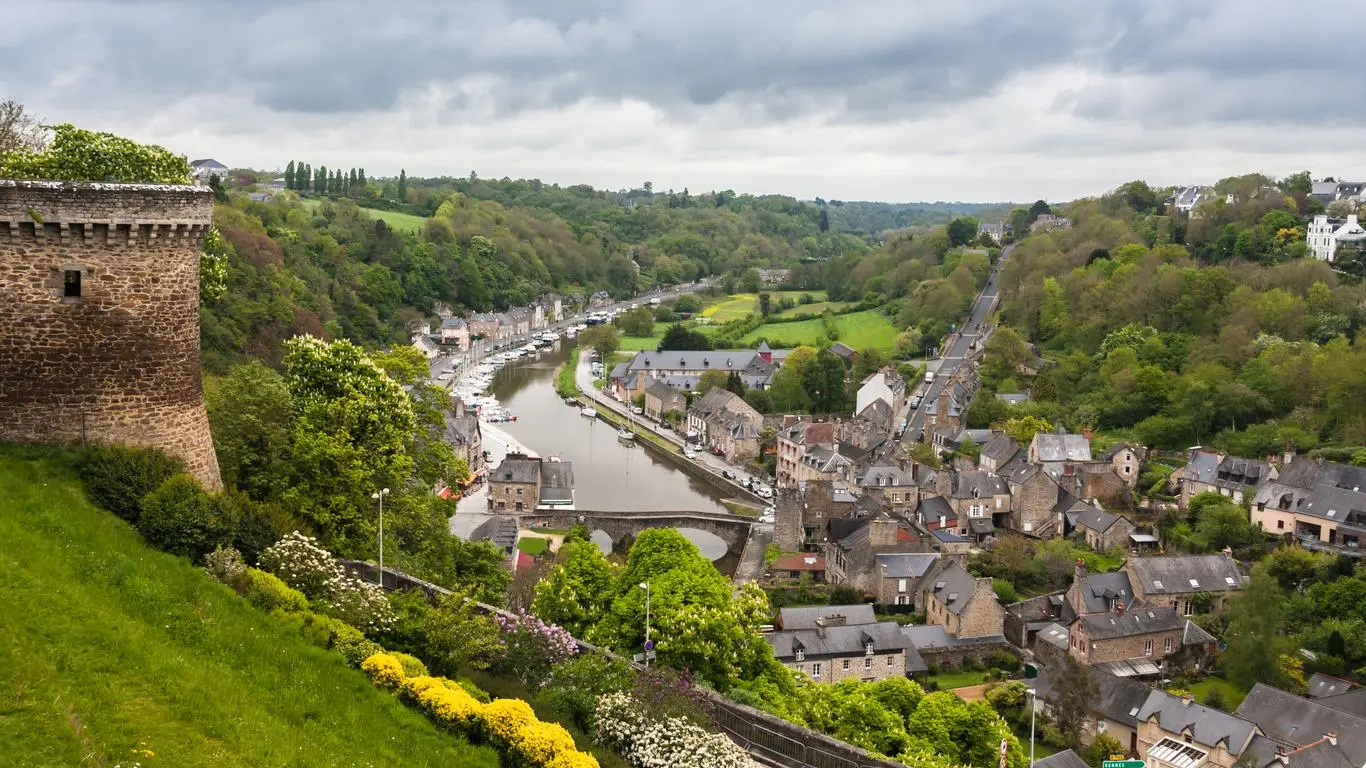
Source: KAYAK
Fontainebleau: A Royal Escape Less Traveled
The Château de Fontainebleau, found in the heart of the eponymous forest, stands as a testament to French history and architectural evolution, offering a royal escape that is somewhat less traveled compared to the more famous Palace of Versailles. This remarkable château has been a residence for French monarchs from Louis VII to Napoleon III, embodying centuries of French history within its walls and expansive gardens.
A Residence of Kings and Emperors
The Château de Fontainebleau is unique for its continuous occupation by French royalty over the centuries. Unlike Versailles, which is often overwhelmed by visitors, Fontainebleau offers a more intimate glimpse into the life of French nobility, with significantly fewer crowds. Its rooms and galleries, such as the François I Gallery and the Napoleon I Museum, showcase the lavish tastes and artistic sensibilities of its former residents, offering visitors a rich, immersive experience.
Architectural and Natural Beauty
Fontainebleau’s architecture is a blend of Renaissance, Classical, and Mannerist styles, reflecting the modifications and expansions carried out by its royal occupants over the years. This diversity is evident in the château’s courtyards, chapels, and boudoirs, each telling a different story of its era. The surrounding Forest of Fontainebleau adds to the château’s allure, with its ancient trees and wildlife providing a serene backdrop to the royal residence. This natural setting has been a source of inspiration for artists, writers, and photographers for centuries, making it a haven for those looking to explore France’s natural beauty.
Giverny: Monet’s Living Canvas
Giverny, a quaint village situated in the Normandy region of France, has eternally etched its name in the annals of art history, thanks to Claude Monet, one of Impressionism’s founding fathers. Monet’s residence and the surrounding gardens in Giverny are not just a testament to his profound influence on art; they are a living canvas that continues to captivate and inspire.
Claude Monet’s House and Gardens
At the heart of Giverny is Monet’s house, a pink stucco structure with green shutters, as vibrant and inviting today as it was in Monet’s time. The house, now a museum, allows visitors to step into the world where Monet lived and worked for over 40 years. Each room, from the sunny yellow dining room to his first-floor studio, is preserved to reflect its original appearance, providing a glimpse into Monet’s daily life and his artistic process.
The gardens, however, are the true masterpiece of Giverny. Divided into two main parts—the Clos Normand and the Water Garden—they were meticulously designed and cared for by Monet himself. The Clos Normand, in front of the house, bursts with a variety of flowers and plants, arranged by color and season to ensure that the garden is in continuous bloom from spring to autumn. This garden served as an ever-changing subject of Monet’s paintings, reflecting his deep fascination with the effects of light and color.
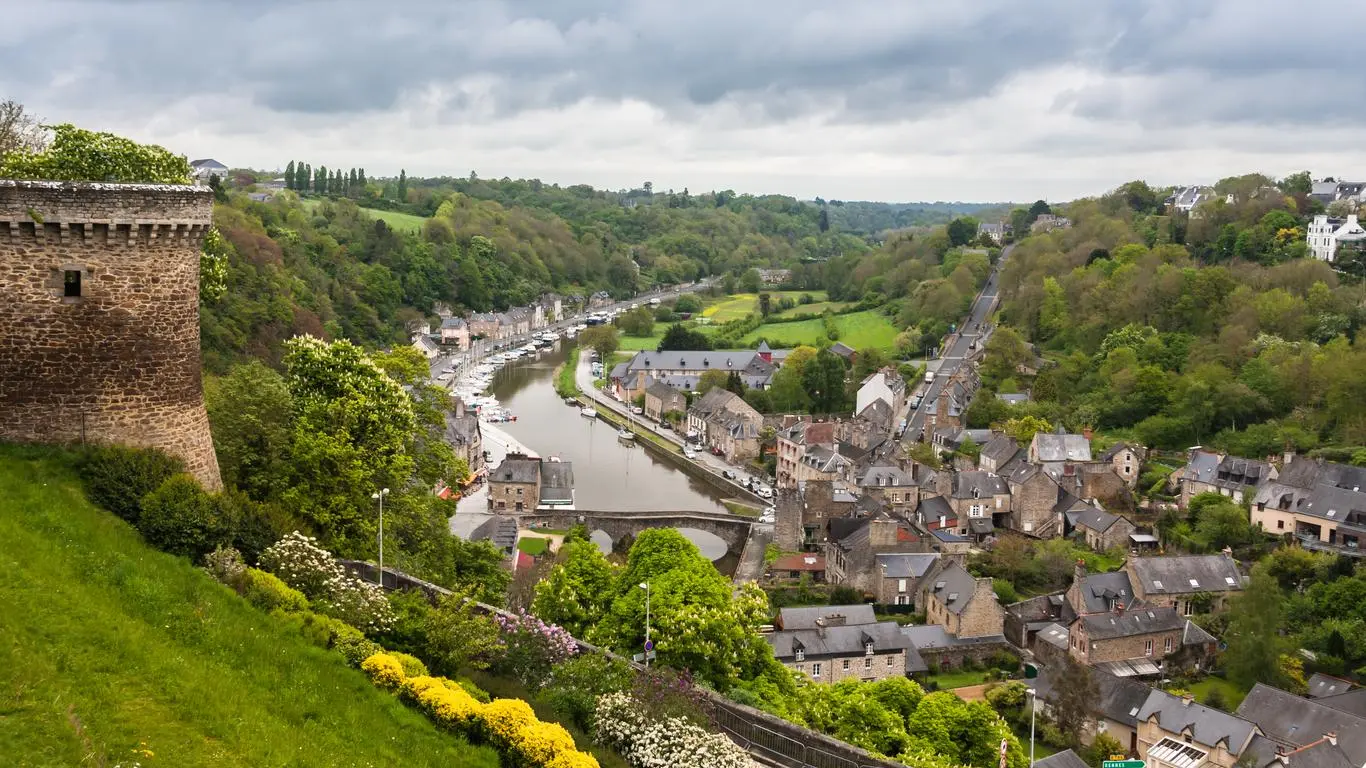
Source: Tripadvisor
The Water Garden, inspired by Japanese gardens that Monet admired, is a tranquil oasis featuring the famous Japanese bridge covered with wisterias, weeping willows, and the iconic water lilies that float on the pond’s surface. This garden, with its reflection of the sky and clouds in the pond, inspired some of Monet’s most renowned paintings, including the “Water Lilies” series, capturing the interplay of light, water, and atmosphere.
Giverny: A Source of Inspiration
Giverny transcends its role as Monet’s home; it is a source of inspiration that illustrates the intimate connection between the artist and his environment. Monet’s ability to transform his surroundings into a living work of art, and then capture its essence on canvas, is a testament to his genius and his influence on the Impressionist movement. Today, Giverny continues to draw artists, garden enthusiasts, and visitors from around the world, all seeking to experience the beauty and tranquility that inspired one of history’s greatest artists.
Lille: A Blend of Art and History
Lille, located in the northern part of France near the border with Belgium, offers a compelling blend of art and history, making it a fascinating day trip from Paris. The city’s vibrant cultural scene is anchored by its rich history, stunning architecture, and numerous museums that showcase both classical and contemporary art.
Art Museums and Cultural Institutions
One of Lille’s cultural highlights is the Palais des Beaux-Arts de Lille, one of the largest fine arts museums in France. It houses a comprehensive collection that spans from the Middle Ages to modern times, including masterpieces by artists such as Rubens, Van Dyck, Goya, and Delacroix. This museum reflects Lille’s commitment to preserving and celebrating art history, offering visitors an extensive overview of European art.
Additionally, Lille is home to LaM (Lille Métropole Musée d’art moderne, d’art contemporain et d’art brut), which features modern and contemporary art alongside a significant collection of art brut. This museum highlights Lille’s role in promoting avant-garde and outsider art, providing a platform for diverse artistic expressions.
Historic Architecture and Urban Landscape
Lille’s historic architecture is a testament to its long and varied history, with influences from Flemish, French, and Industrial heritage. The Vieux-Lille (Old Lille) district is particularly notable for its charming cobblestone streets, grand squares, and beautifully preserved buildings from the 17th and 18th centuries. The Place du Général-de-Gaulle, also known as the Grand Place, is surrounded by impressive architecture and is a popular gathering spot for locals and visitors alike.
The city’s history as an important industrial and commercial hub is also visible in its urban landscape, including the restored factories and warehouses that now serve as cultural venues, shops, and restaurants. This blend of old and new contributes to Lille’s dynamic and welcoming atmosphere.
A Vibrant Cultural Scene
Lille’s cultural richness extends beyond its museums and architecture. The city hosts numerous festivals and events throughout the year, celebrating everything from contemporary art and design to traditional Flemish culture. The Lille3000 festivals, which explore different cultural themes with exhibitions, performances, and urban installations, are particularly noteworthy for their innovative approach to cultural programming.
Chantilly: Elegance and Equestrian Traditions
Chantilly, a gem in France’s Picardy region, marries the elegance of aristocratic history with the thrill of equestrian traditions. At the heart of this picturesque town lies the Domaine de Chantilly, a magnificent estate that encompasses the Château de Chantilly, its sumptuous gardens, and the Great Stables, which stand as a testament to the town’s deep-rooted connection to horse racing and equestrian arts.
The Château de Chantilly
The Château de Chantilly itself is a masterpiece of Renaissance architecture, housing the Musée Condé, which boasts an impressive collection of historical paintings second only to the Louvre in terms of antique paintings. The château’s interiors and the art it houses, including works by Raphael, Poussin, and Delacroix, reflect the opulence and refined taste of its former inhabitants, particularly the princes of Condé, cousins of the kings of France.
The Lush Gardens
Surrounding the château, the gardens designed by André Le Nôtre, the famed landscaper behind the Gardens of Versailles, offer a serene escape into nature. These gardens are divided into several distinct areas, including the French gardens, the Anglo-Chinese garden, and the English garden, each designed to offer a different aesthetic experience and reflect the garden art evolution over the centuries.
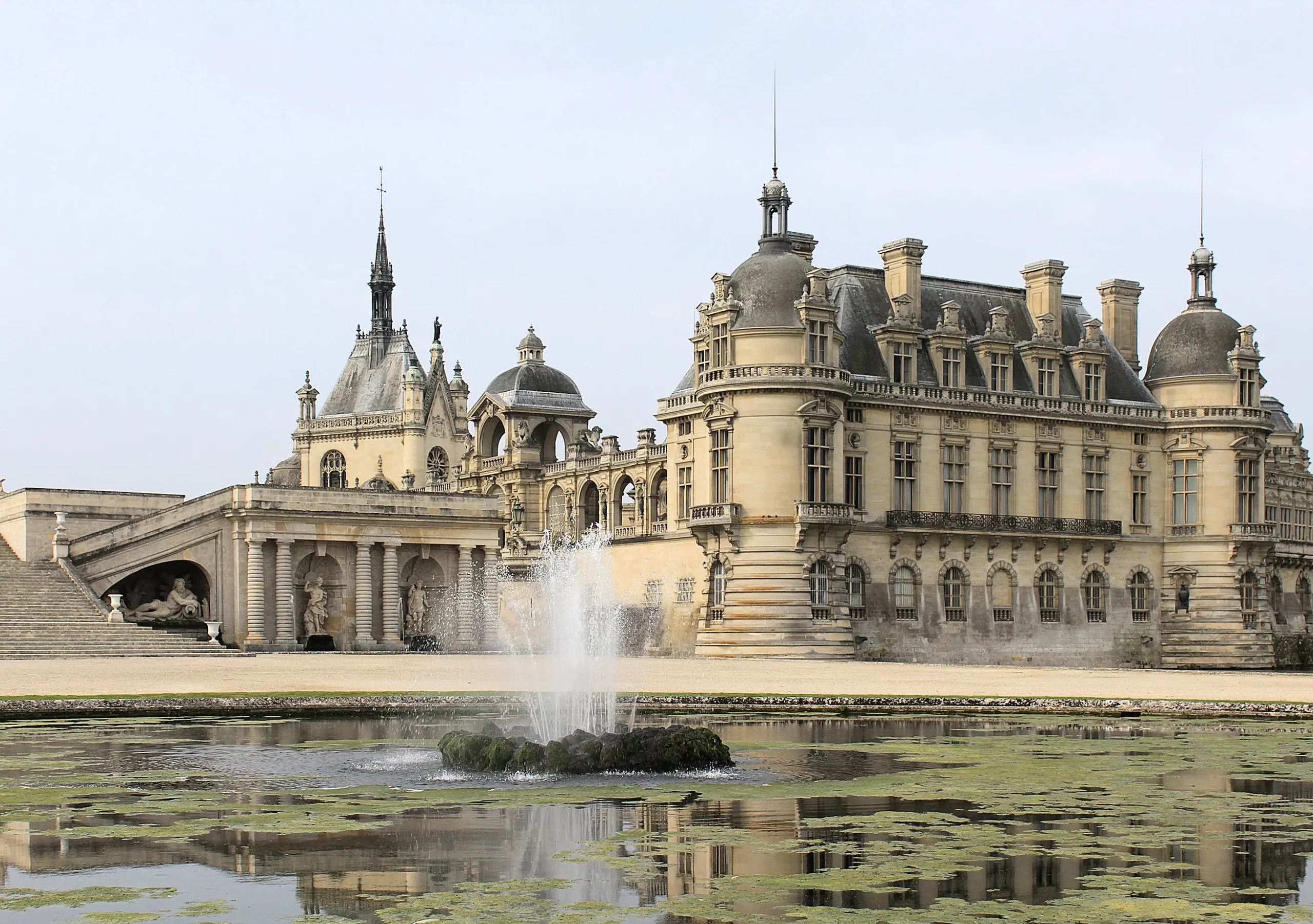
Source: Wikipedia
The Great Stables and Equestrian Traditions
Perhaps what sets Chantilly apart the most is its prestigious Great Stables. Built in the 18th century for the Prince of Condé who believed he would be reincarnated as a horse, these stables are among the most grandiose in the world. Today, they are home to the Living Museum of the Horse (Musée Vivant du Cheval), which celebrates the historical relationship between humans and horses with live demonstrations and an extensive collection of art and artifacts related to equestrianism.
Amiens: The Venice of the North
Amiens, often referred to as the “Venice of the North,” is a city that captivates with its unique blend of natural beauty, historical depth, and architectural marvels. Central to its allure is the Amiens Cathedral, a UNESCO World Heritage site that stands as a masterpiece of French Gothic architecture. Additionally, the city’s water gardens and the lively St-Leu district contribute to its charm, offering picturesque landscapes and a peek into the local culture and history.
Amiens Cathedral: A Gothic Masterpiece
The Cathedral of Notre-Dame in Amiens is not only one of the largest classic Gothic churches of the 13th century but also a beacon of architectural brilliance. Its intricate façade, adorned with statues and sculptures, and its remarkably high nave, create an awe-inspiring space of light and shadow. This cathedral is especially renowned for the quality and richness of its medieval sculptures.
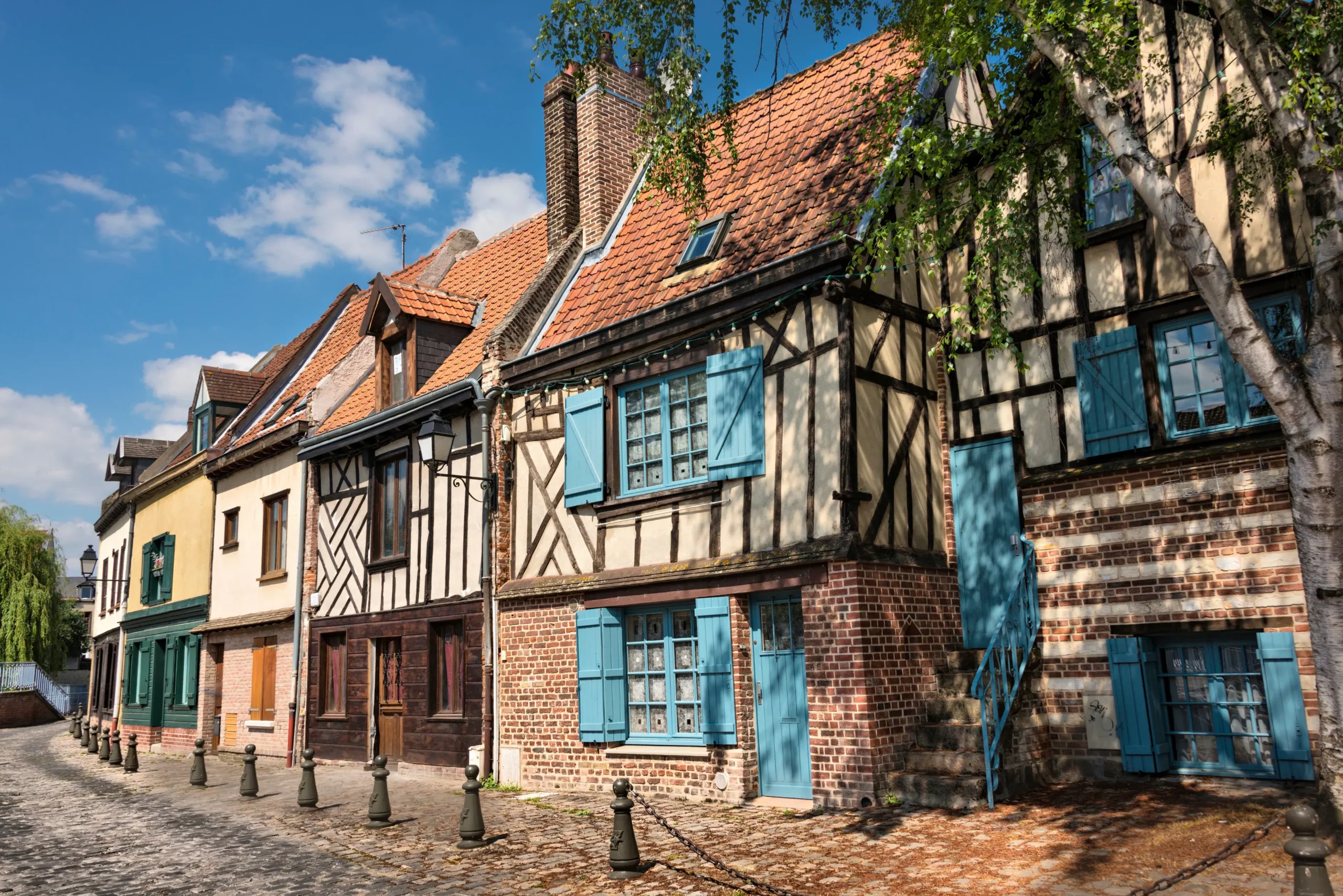
Source: Expedia
The Floating Gardens: Amiens’ Water Gardens
The “hortillonnages” of Amiens are a sprawling network of floating gardens accessible only by boat. These water gardens, covering over 300 hectares of marshland, are a testament to unique agricultural practices dating back to the Middle Ages. They offer a tranquil escape into nature, with the gardens themselves producing a variety of fruits, vegetables, and flowers.
The St-Leu District: A Vibrant Hub
The St-Leu district, with its quaint houses, canals, and vibrant atmosphere, adds a colorful layer to Amiens’ historical landscape. Once a quarter for workers, it has transformed into a bustling area filled with artisans’ shops, cafés, and restaurants. The district’s charm lies in its ability to blend the old with the new, making it a favorite spot for both locals and visitors to explore and relax.
Final Thoughts
Amiens presents a compelling narrative of France’s Gothic architectural prowess, innovative agricultural heritage, and dynamic urban culture. From the awe-inspiring Amiens Cathedral to the serene beauty of its floating gardens and the lively streets of the St-Leu district, Amiens offers a rich tapestry of experiences. It stands as a proud reminder of the country’s diverse cultural heritage, inviting visitors to delve into its picturesque landscapes and rich history.
Exploring the diverse landscapes and rich cultural tapestry surrounding Paris through day trips offers a unique perspective on France’s heritage and beauty. Each destination, from the architectural splendor of Brussels and the medieval charm of Chartres to the regal history of Versailles, tells a story of art, history, and innovation.
Brussels, with its compact grandeur, introduces visitors to Belgium’s capital, highlighting iconic landmarks like the Grote Markt and delicious culinary traditions. Chartres’ Gothic cathedral mesmerizes with its stained glass windows, while Versailles’ opulence and expansive gardens invite contemplation of France’s royal past. Nantes, bridging history with innovation through the Machines of the Isle, and Blois, with its architectural medley at the Château de Blois, showcase the blend of tradition and creativity that defines the French spirit.
Lyon’s gastronomy and vibrant city life exemplify French culinary excellence and cultural richness, whereas Orléans honors Joan of Arc’s heroic legacy amidst its medieval architecture. Strasbourg and Antwerp reveal a fascinating mix of French and German influences, with Strasbourg hosting the European Parliament and Antwerp celebrating its port city heritage. Dijon goes beyond its famed mustard to unveil a city rich in art and history, while Fontainebleau offers a royal retreat with less travel and an intimate look into France’s aristocratic past.
Giverny brings to life Monet’s masterpieces through its picturesque gardens, reflecting the enduring beauty that inspired Impressionism. Lille and Chantilly blend art, history, and equestrian traditions, with Lille’s dynamic cultural scene and Chantilly’s elegant château and racecourse illustrating the diverse facets of French elegance and creativity. Lastly, Amiens, the “Venice of the North,” charms with its Gothic cathedral, unique water gardens, and the vibrant St-Leu district, offering a serene yet lively escape.
Together, these destinations form a mosaic of experiences that enrich understanding and appreciation of French and European culture, inviting travelers to explore beyond Paris and immerse themselves in the varied landscapes, historical depth, and artistic achievements that France has to offer.
In conclusion, the best day trips from Paris by train offer a wonderful escape into the heart of France, combining convenience with the charm of the French countryside and historic cities. These adventures provide an enriching extension to any Parisian holiday, showcasing the diversity and beauty beyond the capital’s boulevards.




Good day! I could have sworn I’ve visited your blog before but after going through some
of the articles I realized it’s new to me. Anyways, I’m
definitely happy I came across it and I’ll be book-marking it and checking back
often!